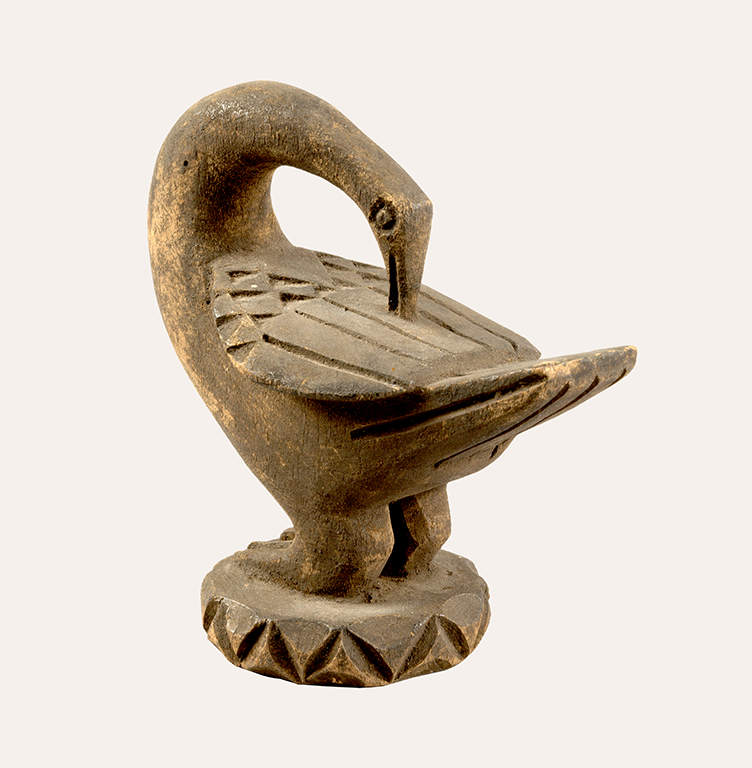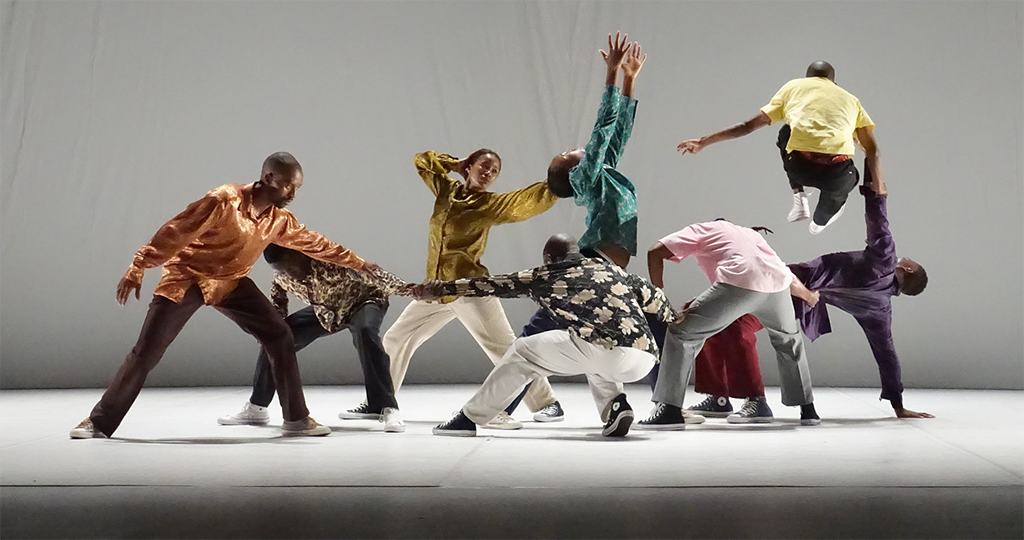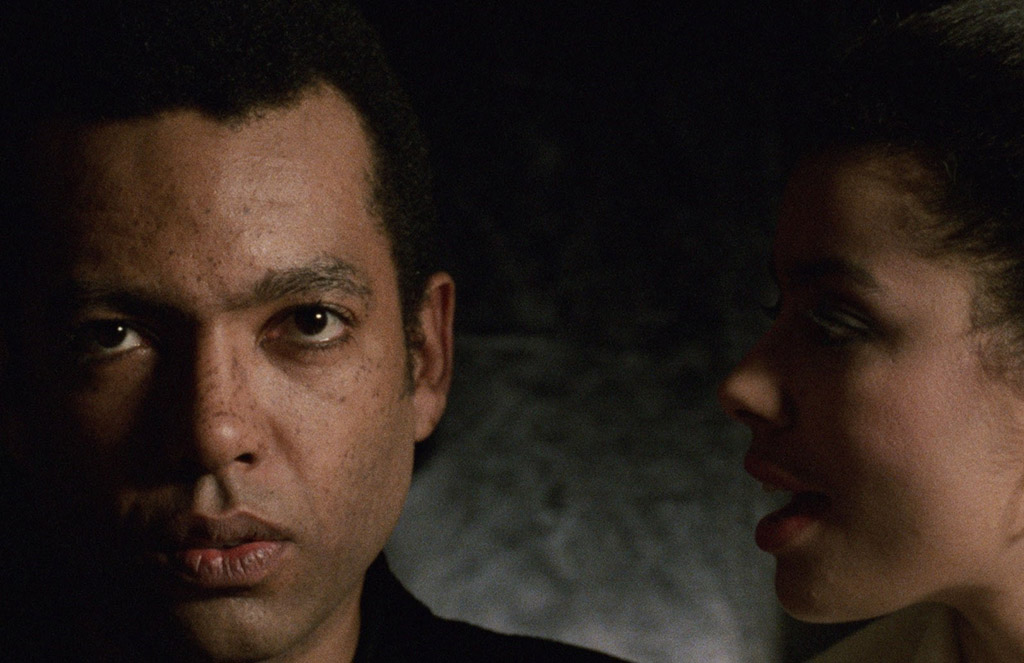In honour of Black History Month, The Tyee has compiled a selection of events and cultural offerings from across B.C. There’s a wealth of expression to take in, from dance to film, art to television. The past and the present informing the other, creating a third iteration: the future.
Sankofa: African Routes, Canadian Roots, at the Museum of Anthropology
This expansive exhibition is on now at the University of British Columbia’s Museum of Anthropology. If you missed it because of snowstorms, atmospheric rivers or tsunami warnings, as I did, now’s the time to head over. The show is brimming with both contemporary work as well as more than 100 objects selected from MOA’s permanent collection to illustrate the continuity and connection between traditional art practices and current work.
One of these items, a small sculpture of a bird by an unknown artist, provides the show its title. A slender creature, its swan-like neck bending backwards to drape elegantly over its body, embodies the term Sankofa. The direct translation of the Ghanaian Akan word means to “go back and get it,” but it has come to encompass a broader meaning, incorporating the idea of the African diaspora writ large.

As co-curator Nuno Porto writes in an essay that accompanies the exhibition: “Sankofa today stands for the global recognition of African and Black experiences in the present, and it serves as a reminder of their many legacies. We can trace the term to its historical Akan root in west Africa, where Sankofa is represented by a bird that moves forward while turning its head back to grasp in its beak an egg: a seed of the future brought from the past.”
The exhibition is organized into thematic areas by three different curators. As the show’s subtitle — African Routes, Canadian Roots — indicates, particular attention is paid to Black Canadian artists. The sheer number of installations, photos, sculptures, paintings and textiles indicates the richness of different creative and cultural traditions on offer. Sankofa runs until March 27.
Two films at the Cinematheque
The Cinematheque is offering a lovingly curated selection of films including the documentary Prism and Wendell B. Harris Jr.’s drama Chameleon Street as a new 4K restoration.
The story of the production of Chameleon Street is as interesting as the film itself. After the film won the Grand Jury Prize at the Sundance Film Festival in 1990, its star and director struggled to get a distribution deal. Even after Harris Jr. moved to Hollywood and sold the remake rights for the film, nothing happened. Over the years, film stars like Wesley Snipes, Will Smith and Spike Lee were attached to the project. The director spoke bluntly about the experience when the film was released on DVD in 2007, explaining that he believed the film was actively suppressed by the Hollywood establishment because it threatened the status quo. To date, Chameleon remains Harris’s only feature film.
Chameleon is based on the real-life exploits of a Michigan conman named William Douglas Street Jr. who impersonated various professionals such as a lawyer, reporter and surgeon, arguably to gain the respect that these positions offered. After 30 years, the political punch of the film remains razor sharp. The additional edge of the filmmaker’s own experience of failing to get another film project added another level to its message of cultural suppression versus Black ingenuity.
Is the camera inherently racist? It’s an idea that keeps emerging. When British Vogue magazine recently featured nine models of colour on its front cover, there were, to put it mildly, divergent reactions. While some heralded it as a landmark image, others thought the women featured were styled to such an extent that they were robbed of energy and joy, reduced to a state of mannequin flatness.
In their film Prism, a trio of documentary filmmakers, Eléonore Yameogo, An van. Dienderen and Rosine Mbakam from Cameroon, Burkina Faso and Belgium, examine the nature of cinema technologies and race. At the outset the three women, two of colour and one white, meet over Zoom to examine the idea of how skin tones are calibrated using white skin as a baseline for colour balance in film. But even these meetings prove tricky, as Yameogo’s laptop computer turns her into a shadowy silhouette if she sits too far back from the lens.
The film takes a conversational approach, with interviews of a wide variety of actors, directors and teachers. Some of the most fascinating exchanges happen between Mbakam and her former professors at a French film school, where the white male academics struggle to explain why there are so few filmmakers of colour in their syllabi. Whether cinema itself is a tool of the Global North, with the Global South providing the raw materials of story, is also addressed in a series of revealing discussions.
As the different creatives weigh in on whether the very apparatus of the camera is biased, some profound philosophical questions emerge. As actor Sylvestre Amoussou says in an interview, “the aesthetics and emulsions weren’t created for us.”
The repercussions of colonialist history in image-making linger longest in the documentary’s more experimental moments, such as a restaging of Marie-Guillemine Benoist’s famous painting Portrait de Madeleine. In an elegant sequence, the original image of a Black woman baring her breast is stripped of its more exploitive connotations. Dignity, grace and power replace passivity, as the woman taking on the role of the original painting’s subject confronts the camera with a direct stare.
The dance of South Africa

DanceHouse, in partnership with Digidance, is offering a digital broadcast of South African dance company Via Katlehong and contemporary choreographer Gregory Maqoma’s Via Kanana from Feb. 16 to March 6. The presentation includes a documentary about Via Katlehong.
The South African dance form pantsula is the engine that drives Via Kanana. Originating in Sophiatown, a community in Johannesburg, the dance, with its fancy footwork and flashy outfits, was originally a means for young men to demonstrate both cultural identity and stylish moves. Since the 1950s, pantsula has evolved and expanded to include a wide variety of different meanings and manifestations, from the personal to the political. Maqoma’s work incorporates both of these aspects.
In an interview with the Guardian, Maqoma explained that although Via Kanana was about the large-scale political corruption in South Africa, much of the content came directly from the performers’ own experience:
“When we created the work, we were still under the leadership of probably the most corrupt leader in our country, our ex-president Zuma.... One of the guys said: ‘You know, my grandmother still lives in a shack, and I live in a shack, and it’s 24 years after apartheid: what has the fight really been for? Why are things still the same? Why are things worse?’”
The title of the show, derived from the Sotho word meaning “a land that has been promised, but not delivered,” is an apt summation of post-apartheid South Africa.
In the filmed version of the production, eight performers, seven men and one woman, dressed in street clothes like silky dress shirts, khakis and Converse high-tops, embody both the pain and the joy of their nation’s experience, moving through a series of vignettes that examine the failed promises of South African history.
The performance uses text, projection and dialogue to create a journey through the political landscape of the country, from violence to solidarity. In one sequence, the dancers depict a train journey through a long bleak landscape, each performer holding a newspaper with screaming headlines. The word “corrupt” is repeated over and over, as a disembodied voice promises “a new Africa, one where there is honesty.”
Later, dialogue uses the term “reshuffle” as a perverse indicator of the hollow promises held out by leaders and politicians that never come to pass. But ultimately, it is the pleasure of movement and connection that endures.
The Porter on CBC
CBC’s new limited series doesn’t air until Feb. 21. The early history of Black train porters in the U.S. and Canada provides a rich premise from which to draw stories of struggle and survival.
In the 1920s, although Black porters made up a sizable portion of railroad workers, they were not allowed to join the union. Canadian Pacific Railway joined communities across the U.S. and Canada, including the neighbourhood of St. Antoine in Montreal, once called “Harlem of the North.” The ensemble cast brings the drama to vivid life.
A big, sprawling production, The Porter offers a remarkable look back at Black Canadian history, filled with passion, pathos and empowerment around the creation of the very first Black union. ![]()
Read more: Rights + Justice, Art, Film

















Tyee Commenting Guidelines
Comments that violate guidelines risk being deleted, and violations may result in a temporary or permanent user ban. Maintain the spirit of good conversation to stay in the discussion.
*Please note The Tyee is not a forum for spreading misinformation about COVID-19, denying its existence or minimizing its risk to public health.
Do:
Do not: